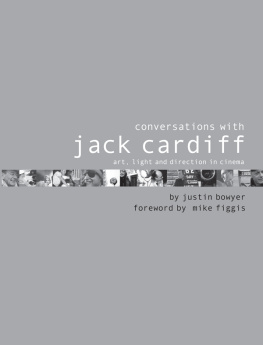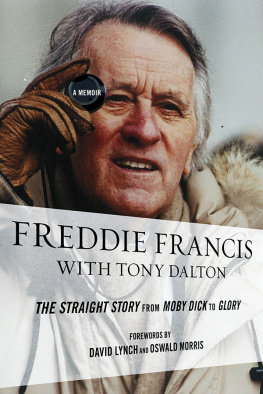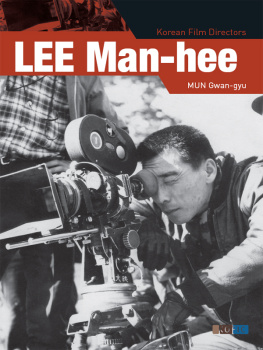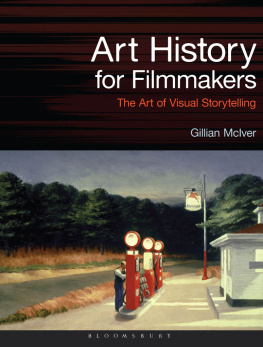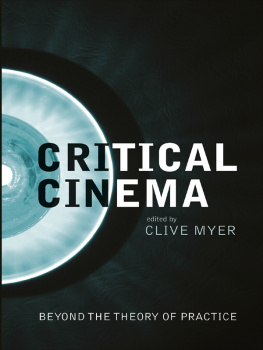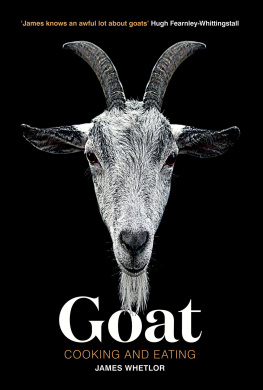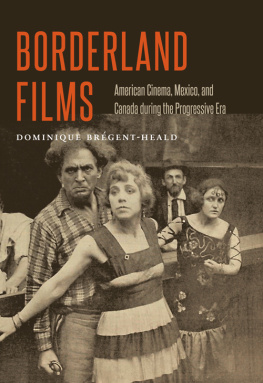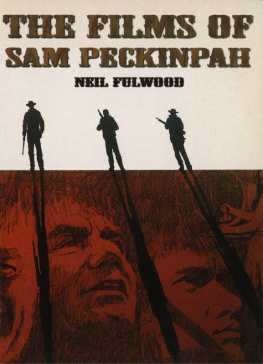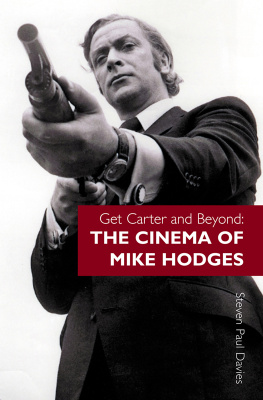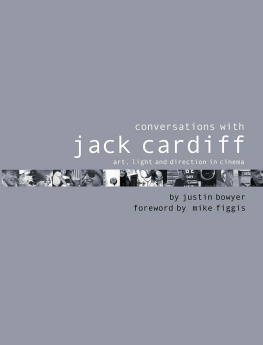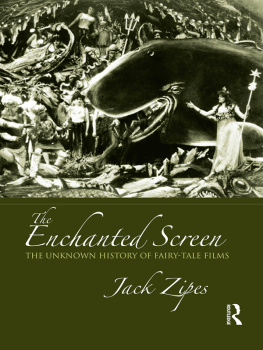About Batsford
Founded in 1843, Batsford is an imprint with an illustrious heritage that has built a tradition of excellence over the last 168 years. Batsford has developed an enviable reputation in the areas of fashion and design, embroidery and textiles, chess, heritage, horticulture and architecture.
conversations with
jack cardiff
art, light and direction in cinema
conversations with
jack cardiff
art, light and direction in cinema
by justin bowyer
foreword by mike figgis

First Published 2003 by Batsford
an imprint of Pavilion Books Company Limited
1 Gower Street
London
WC1E 6HD
www.batsford.com
Twitter: @BatsfordBooks
Justin Bowyer 2003
The right of Justin Bowyer to be identified as Author of this work has been asserted by him in accordance with the Copyright, Designs and Patents Act 1988.
Illustrations supplied by Jack Cardiff (unless specified otherwise)
All rights reserved. No part of this publication may be copied, displayed, extracted, reproduced, utilised, stored in a retrieval system or transmitted in any form or by any means, electronic, mechanical or otherwise including but not limited to photocopying, recording, or scanning without the prior written permission of the Pavilion Books Company Limited.
First eBook publication 2014
ISBN 978-1-84994-253-9
Also available in paperback
ISBN 978-0-71348-855-5
For Helen and Callum
Contents
A theatrical family An education of sorts The early British studios First acting roles: My Son & Billys Rose Alfred Hitchcock Behind the camera on The American Prisoner & Loose Ends Freddie Young Sir Alexander Korda Knight Without Armour & Marlene Dietrich
Defining the cinematographer Pioneering Technicolor Wings of the Morning Henry Fonda Punching His Majesty: The Coronation of King George VI Count von Keller & World Windows To War Western Approaches
Michael Powell & Emeric Pressburger Caesar and Cleopatra A Matter of Life and Death : Battles with Technicolor David Niven & Marius Goring The bloody bore of editing Alfred Junge Black Narcissus Studio Himalayas: Alfred Junge & Poppa Day Caravaggio & Vermeer by candlelight Academy Award The Red Shoes Learning to love ballet Moira Shearer & Lonide Massine Oscar snub
Scott of the Antarctic & John Mills Under Capricorn one shot wonders Method in Hitchcocks madness Ingrid Bergman & Joseph Cotton Henry Hathaway The Black Rose & Tyrone Power Orson Welles Directing Montmartre Pandora and the Flying Dutchman Ava Gardner The Magic Box
Hell in the jungle: The African Queen Huston, Bogart, Hepburn & Bacall The Master of Ballantrae In with Flynn Crossed Swords Gina Lollobrigida Almost a director William Tell Joseph Mankiewicz and The Barefoot Contessa Ava Gardner War and Peace King Vidor Dino De Laurentiis Lighting the duel Audrey Hepburn Legend of the Lost : Sophia Loren and John Wayne Olivier and Monroe
The Diary of Anne Frank Richard Fleischer The Vikings Kirk Douglas, Tony Curtis, Ernest Borgnine & Janet Leigh Directing at last: Intent to Kill A second feature: Beyond This Place Fanny and the Oscar nomination Scent of Mystery : The first Smelly Peter Lorre
Directing Sons and Lovers Trevor Howard The trouble with censors Oscar nominations My Geisha and Shirley MacLaine Never work with children or (wild) animals: The Lion Fighting on The Long Ships Walking out on Widmark John Fords boots: directing Young Cassidy Rod Taylor The Liquidator and The Mercenaries Cult classic: Girl on a Motorcycle Marianne Faithfull Stunt rides and Technicolor effects The critics
Penny Gold and The Mutations Scalawag: back with Kirk Douglas Death on the Nile Ustinov, Niven & Davis Prince and the Pauper Oliver Reed The curse of Avalanche Express The Fifth Musketeer The Dogs of War Ghost Story & Fred Astaires feet Michael Winner: The Wicked Lady The Far Pavilions and The Last Days of Pompeii Conan the Destroyer David Lynch and Blue Chairman of the Board Velvet Rambo: First Blood Part II Sylvester Stallone Tai-Pan
Million Dollar Mystery Showscan: Call From Space Classical Music Videos Lifetime Academy Award Going digital
Foreword by Mike Figgis
Necessity is the mother of invention
Usually the best ideas in cinema come out of situations where a tricky problem arises and there isnt a piece of equipment around to solve it. Jack Cardiff seems to have spent much of his life and career solving problems. Starting very young and rapidly working his way through the not-so-permeable layers of the film industry, he quickly established a reputation as a cameraman with an incredible eye for light and a very sound understanding of the psychology and frailty of artists. Being an artist himself must have helped somewhat. Being a natural risk taker puts Jack Cardiff into a more rarified category than most of his peers. There is an anecdote in the book in which Mr Cardiff describes the men from Technicolour coming onto his set and handing him a light-meter and telling him to use it, or the camera would be withdrawn from him. I re-read this passagedid this mean that he wasnt using a light-meter prior to this? Apparently so. Respect to Mr Cardiff!
Film-making has always been expensive. Its always someone elses money and therefore there is always a huge pressure to be conventional. To paraphrase Billy Wilder, No-one ever went to see a film because it was conventional (Wilder actually said No-one ever went to see a film because it came in on budget). Without the Jack Cardiffs of this world, we would never have great cinema.
This fascinating book allows Jack Cardiff to talk us through the history of cinema. He talks freely, but never unkindly, about the greatest actors, directors, producers, designers and writers of the last 80 years. There is a refreshing absence of bitterness or rancour about the things that went wrong, the money that vanished or the things that could have been. There is so much to be learned from this great manthe way actors behave (in certain conditions), the way light behaves (in certain conditions), and the way directors behave (in certain conditions)...
Jack Cardiff is a great cinematographer, one of the best. But clearly he is also a great artist and a great film-maker. Id like to take this opportunity to thank him for all his work; hes certainly been a great inspiration to me. Thank you, Jack.
January 2003
Jack Cardiff: A Tribute by Bill Taylor
I first met Jack when he shot Ghost Story for Universal, back in the late 1970s. In those days, a foreign cameraman working in the studios had to have an American shadow, and since I was already working on the film as Al Whitlock's cameraman, I was the logical choice. What a dream experience for a young cameraman, to be paid to watch Jack Cardiff work! He was delightful, generous, and happily answered all questions.
I had expected that a man with his background would use many lights in complex set-ups and work at high light levels. Instead, the first shot I saw him light was a good-size real Vermont church interior, with a total of three 9-light PAR fixtures (one through a window) and some tracing paper diffusion. Of course, it looked beautiful, just as if the pale wintry light outside had done it all.
So my first lesson learnt from Cardiff was: you don't necessarily need a lot of lights if you put a few in exactly the right place.
As it turned out, I learned my craft from two great Englishmen who loved painting. Al Whitlock taught me composition and observation through his matte painting, and Cardiff taught me how to light.
Bill Taylor is Director of Photography at Illusion Art and Vice Chairman of the Board of the Visual Effects Society.
Next page
